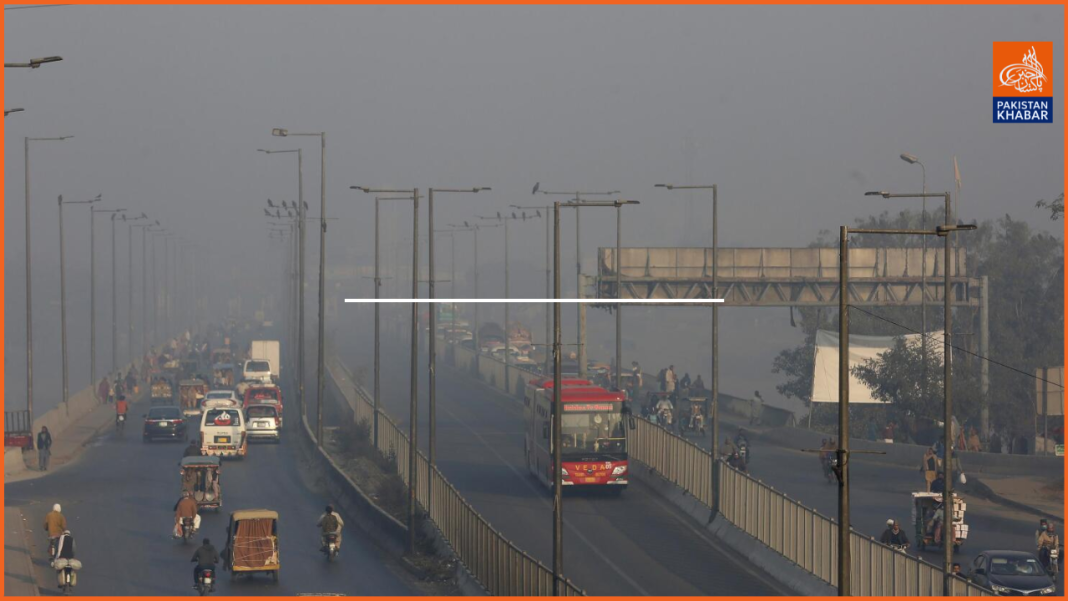Lahore, once celebrated as the “City of Gardens,” has once again been overwhelmed by hazardous smog, earning the title of the world’s most polluted city on Thursday.
The Air Quality Index (AQI) in Lahore soared to a dangerous 593 early in the morning, before slightly decreasing to 525 by 10:30 am. However, some areas reported even worse air quality, with Lahore Cantt at 876, Shimla Hill at 840, and DHA at 682.
According to IQAir, a Swiss air quality technology company, the most polluted cities globally include Lahore, New Delhi (372 AQI), Karachi (220 AQI), and Kolkata (167 AQI). Both Pakistan and India face severe air pollution levels in the winter, as cold air traps emissions, dust, and smoke from illegal crop residue burning in Punjab and Haryana.
The ongoing smog crisis has significantly disrupted daily life in Punjab. Educational institutions recently reopened after a two-week closure, with schools operating from 8:45 am and requiring masks for students and staff. However, outdoor sports and extracurricular activities remain suspended.
The Punjab government had initially closed schools in Lahore, Gujranwala, Faisalabad, and Multan divisions on November 6. By November 12, five additional divisions—Dera Ghazi Khan, Sahiwal, Sargodha, Bahawalpur, and Rawalpindi—were also affected due to worsening air quality. Although schools were scheduled to reopen by November 17, the closures were extended as pollution levels remained dangerously high.
The toxic smog has also had a severe impact on public health, with over 5,000 asthma cases reported in Lahore hospitals last week, alongside a significant increase in respiratory illnesses and coughs.




